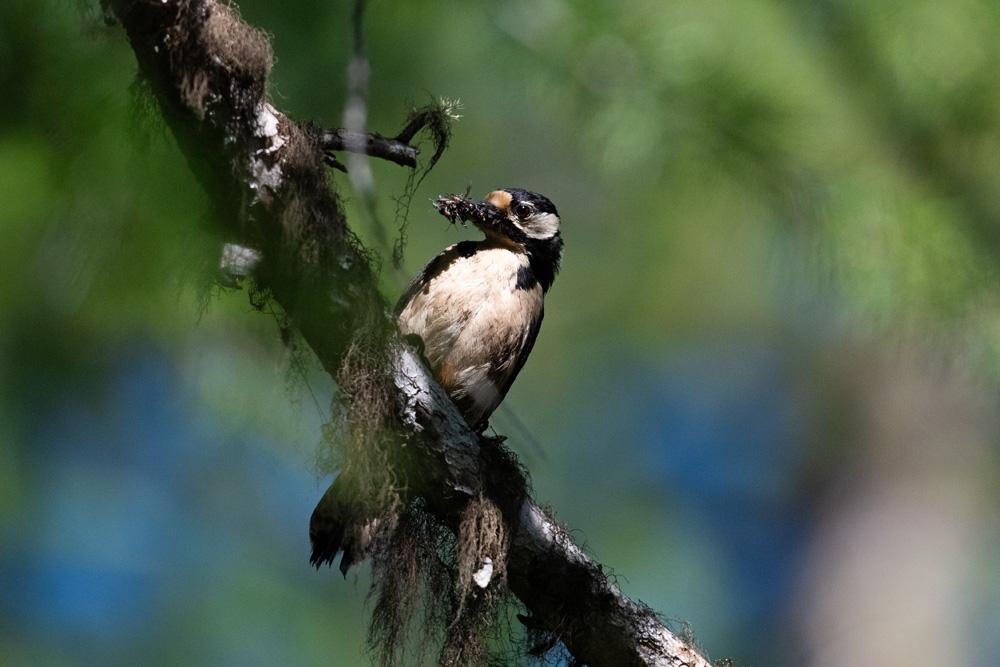As day breaks, we can see the shape of the fir trees against the pink sky. It's time for us to go...
We chose two fixed lookouts, based on our monitoring data and previous observations. We set off at daybreak, set up the equipment in silence and wait... That morning, a large stag (deer) stealthily appears, its velvet antlers are very impressive. It's 5:20 a.m., the light is bad, but the photo shows the majesty of this beautiful deer, so we share with you the picture

A pair of roe deer have established their territory in the area and are eating at a respectable distance from each other. In fact, the rutting season is about to begin, and we see the male attempt to seduce the young female, but she ignores him and move away to show him she isn't interested at all. So the poor guy sets off again and, frustrated, lashes out at a shrub with his antlers. He finally left
her but tried to seduce her again the week after, without any further success. Perseverance always pays off...

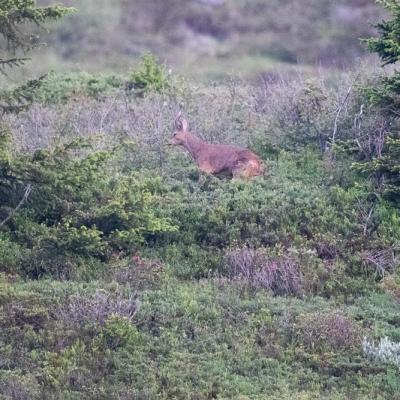
At the end of the morning, just when we were about to leave, we see a fox. In sunlight, he starts eating small insects, which he catches with impressive dexterity. He wanders, observes and hunts without much conviction. Eventually, he moves a little closer to our blind, allowing us to take a photo from a respectable distance. He then heads off into the forest, probably to cool off and rest before the next hunt.

We also had a visit from "Josephine", the little green caterpillar (Operophtera brumata) who wanted to see the world in a big way. She latched onto our spyglass and wouldn't let go. She probably wanted to discover what that region had to offer, since once she'd turned into a butterfly (Winter Moth), she'd only be able to see it at night.
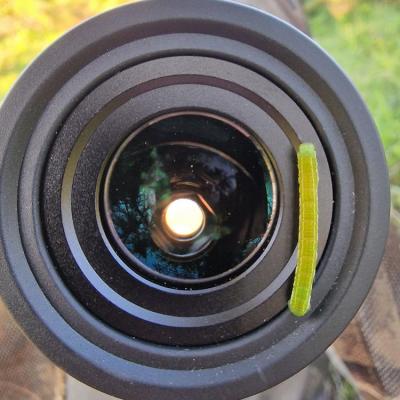
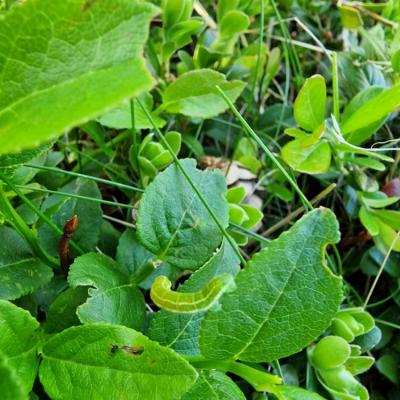
The week before, we spotted a very noisy trunk and posted a video on our Instagram page. We soon spotted the happy parents, who were taking it in turns to come and feed their happy offspring: they were Woodpeckers. We stayed at a distance, well hidden, and were able to immortalize the arrival of the parents at the nest, their beaks full of tiny insects, from ants to flies and larvae. Never satiated, the little ones cry out for food almost constantly, forcing the parents to find enough food to feed them. It's a magical moment to watch, and we're delighted to share a few photos with you. We'll give you some news of the Woody Woodpecker family !
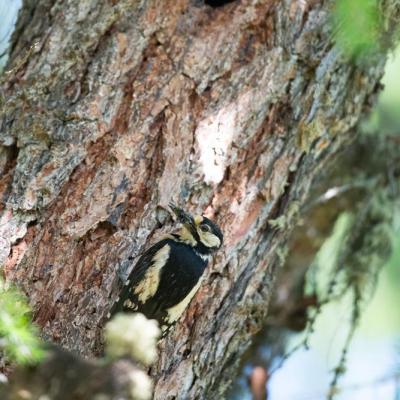
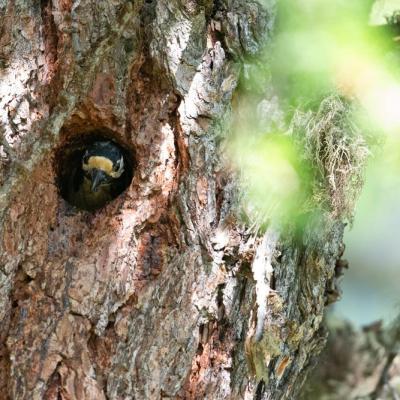
On our way to set some of our camera traps during the day, we met two friendly teenagers, who surprised us but were just as surprised. Two young ibexes were prowling around, enjoying the coolness of the forest rather than the heat of the peaks. They made us laugh out loud by watching us tinker with the trap, curious to see what the little box hanging from a tree they'd just passed was for. Charming company, we waved them goodbye as we left, and we let them get on with their sunny afternoon.
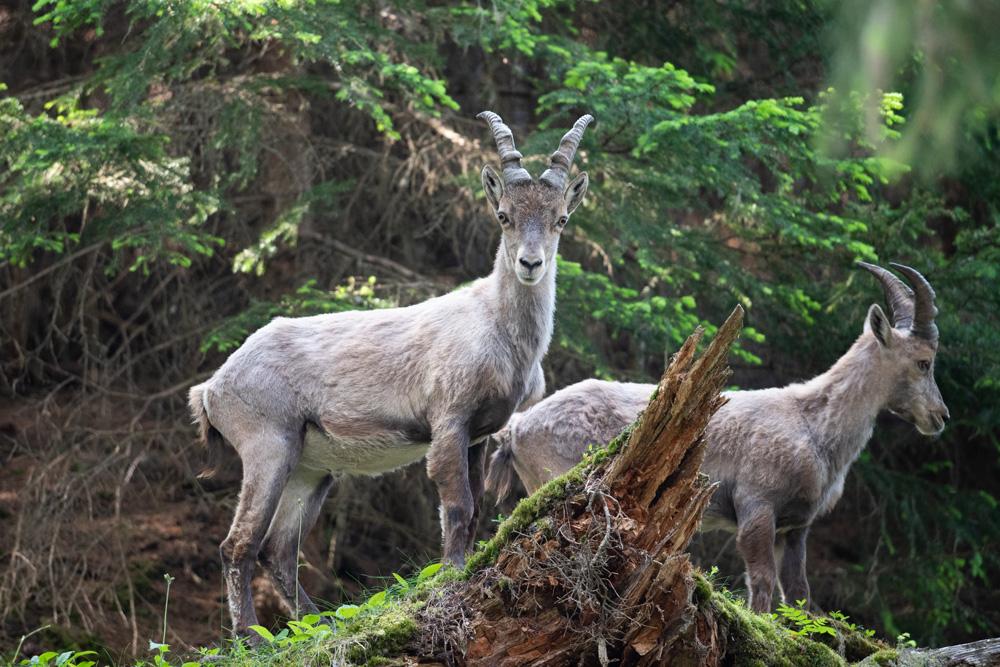
Returning to our staging area in the late afternoon, we came across a doe on the way. She wasn't that shy as we were on the move when she noticed us. She tolerated us and continued grazing once she was sure we'd gone on our way. She was alone and very vigilant, not being able to count on one of the herd's lookouts to watch her back
.

We ended the evening with the song of a nutcracker, which had taken up residence close to us. He was clearly noisy, but it helps pass the time.
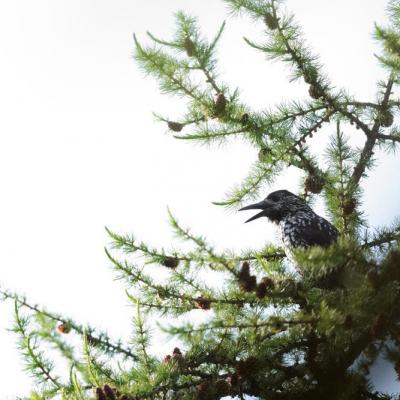
Time flies, and we hope that Arsène and Lupine will soon pass through this magnificent area. They have been seen on one of our camera traps, wandering around at night, but the images are of poor quality as they passed by too fast. In the coming weeks, we're going to set up a more global observation, from a distance, to spot the couple's comings and goings.
Article : TT - Wolf Mission
Photos : Wolf Mission (copyrights)
